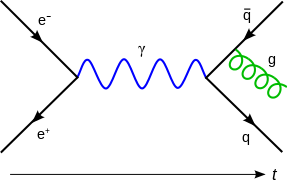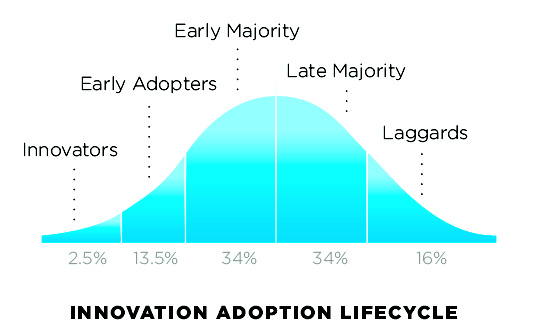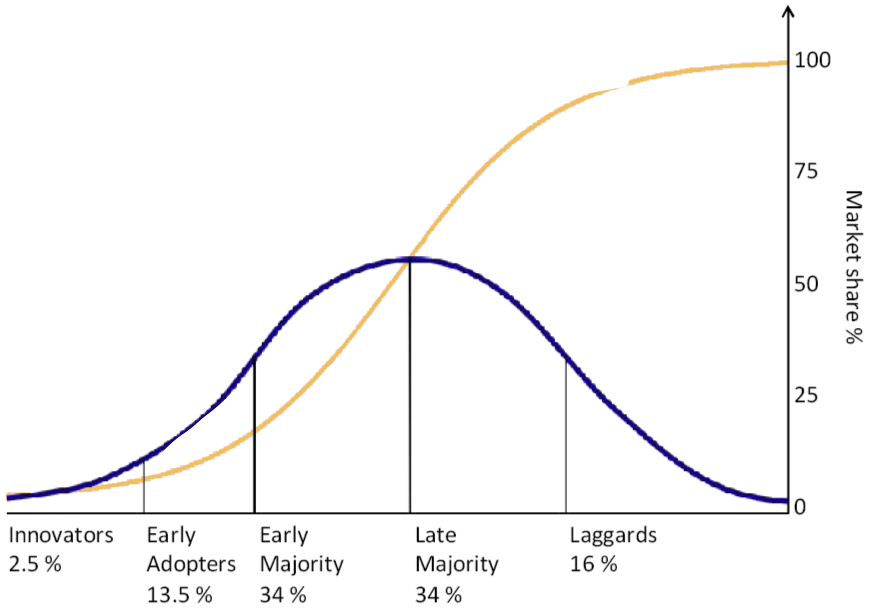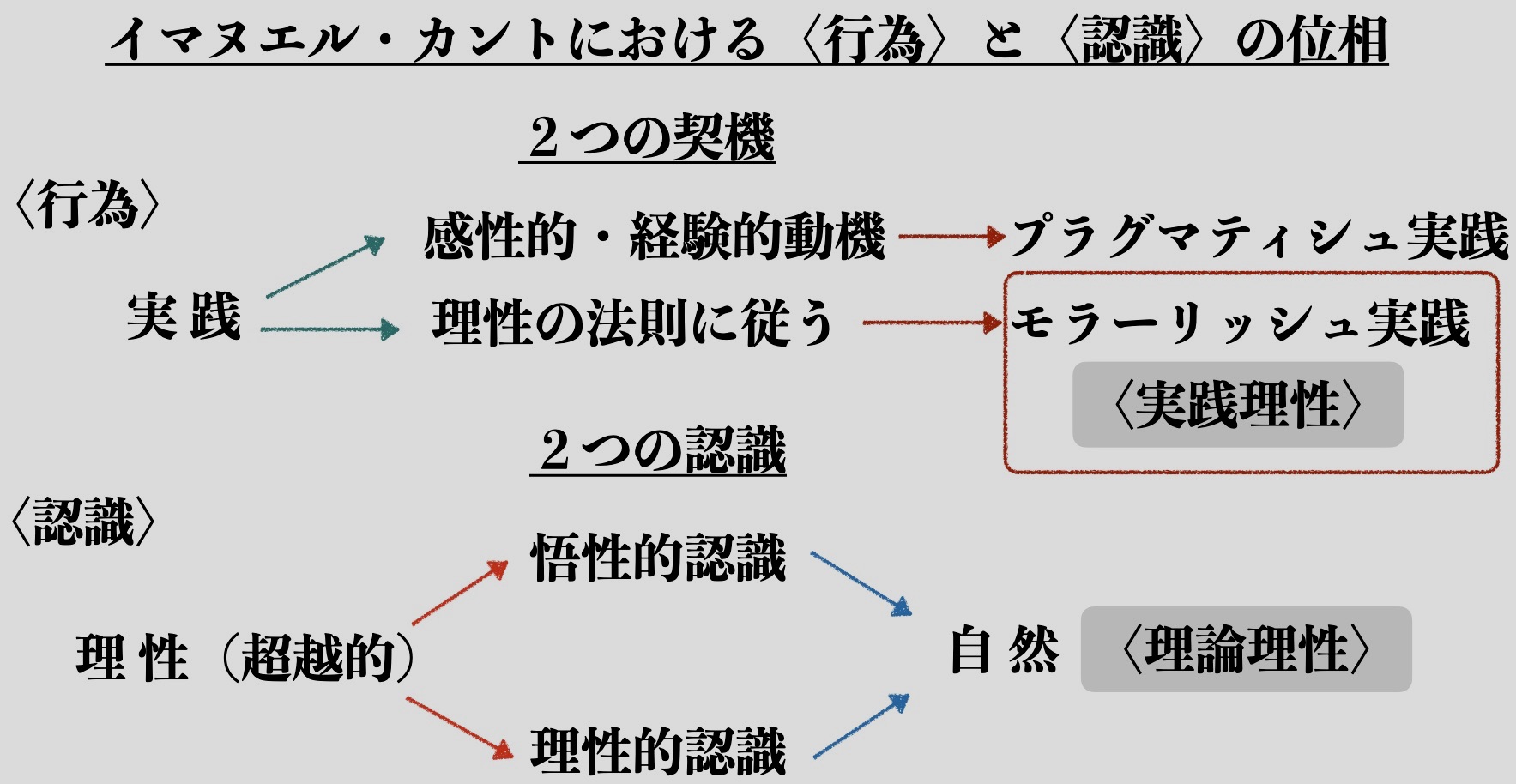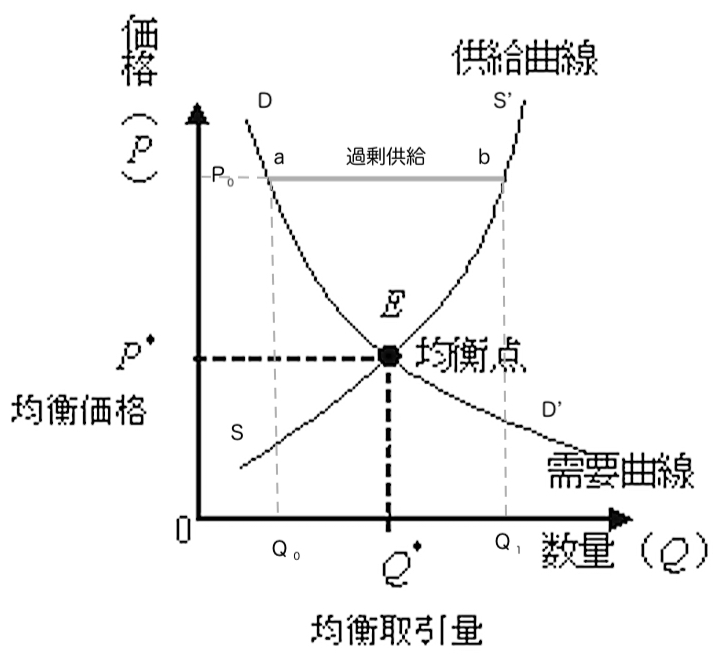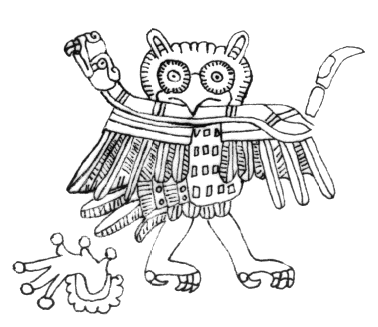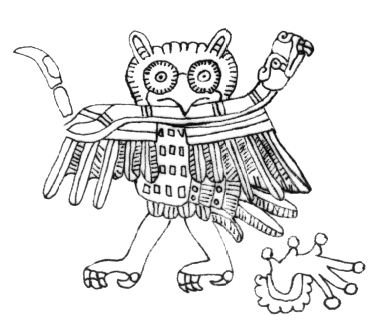このページはCO*-DESIGN 用語集01ならびCO*-DESIGN 用語集02の続編である。詳しい断り書きは、CO*-DESIGN 用語集01に記してあります。These contents are written in Japanese. Your comments and critiques will be welcomed via e-mail to MiTzubixi, rosaldo[at]cscd.osaka-u.ac.jp
サイト内検索は、Ike-Pediaで!
- 03-000● このページの作者(垂水源之介)について
- 03-001■ ごろつきの英語名について
- 03-002■ 遠隔教育(Distance education or distance learning, correspondence courses, online education)
- 03-003■ Universal Virtual Computer (UVC)
- 03-004■ ファクト・チェッキング(Fact-checking)
- 03-005■ 研究開発エコシステム(OU Research & Deveplopment Ecosystem, OU-R&D-E)→大阪大学エコシステム(OU Ecosystem)
- 03-006■ ライフデザイン・イノベーション研究拠点(initiative for Life Design Innovation, iLDi)
- 03-007■ ヒューマンライブラリー(human library)
- 03-008■ くりこみ(normalization)
- 03-009■ 司法ミニマリズム(Judicial minimalism)
- 03-010■ リスク規制プログラム(Program on Risk Regulation)
- 03-011■ 公共哲学(Public philosophy)
- 03-012■ GPT-3(Generative Pre-trained Transformer 3)
- 03-013■ 反蔵書(anti-book-collection, counter-collection of books)
- 03-014■ エリアマネジメント(Managed area method, Area Management method)
- 03-015■ アーリーアダプター(Early Adopters)
- 03-016■ サブスク、サブスクリプション(Subscription)
- 03-017■ 実用最小限の製品(Minimum Viable Product, MVP)
- 03-018■ 内臓理論(Visceral Theory)
- 03-019■ チューリング・テスト(Turing test)
- 03-020■ 実践理性(praktische Vernunft, practical reason)
- 03-021■ 均衡理論(equilibrium theory)
- 03-022■ 尊厳(Dignity)
- 03-023■ デジタル・ネイティブ(Digital native)
- 03-024■ Nineteen Eighty-Four: A Novel(1984)
- 03-025■ パーセプトロン(Perceptron)
- 03-026■ イーポートフォリオ、e-ポートフォリオ(e-portfolio, electric portfolio)
- 03-027■ 収穫逓増(Increasing returns)
- 03-028■ 収穫逓減(diminishing returns)
- 03-029■ フィルターバブル(filter bubble)
- 03-030■ PoC, 概念実証(Proof of Concept)
- 03-031■ mRNAワクチン
- 03-032■ B to B, B to C
03-000● このページの作者(垂水源之介)について(再掲です→「私の教育について」)
私(垂水源之介)の属する大学では教育目標として教 養・デザイン力・国際性の3つを揚げています。私の属するセンターでは、私は大学と一般市民のあいだに壁と不信感があるという現状を打破し、それを改善す ること、利害や立場の異なる人々との 間をつなぐコミュニケーションの方法を考え、設計するということを理念としています(→「私の教育について」)。
私の大学への教育方針は、学生・院生への教育・指導 (メンタリング)の一言につきます。
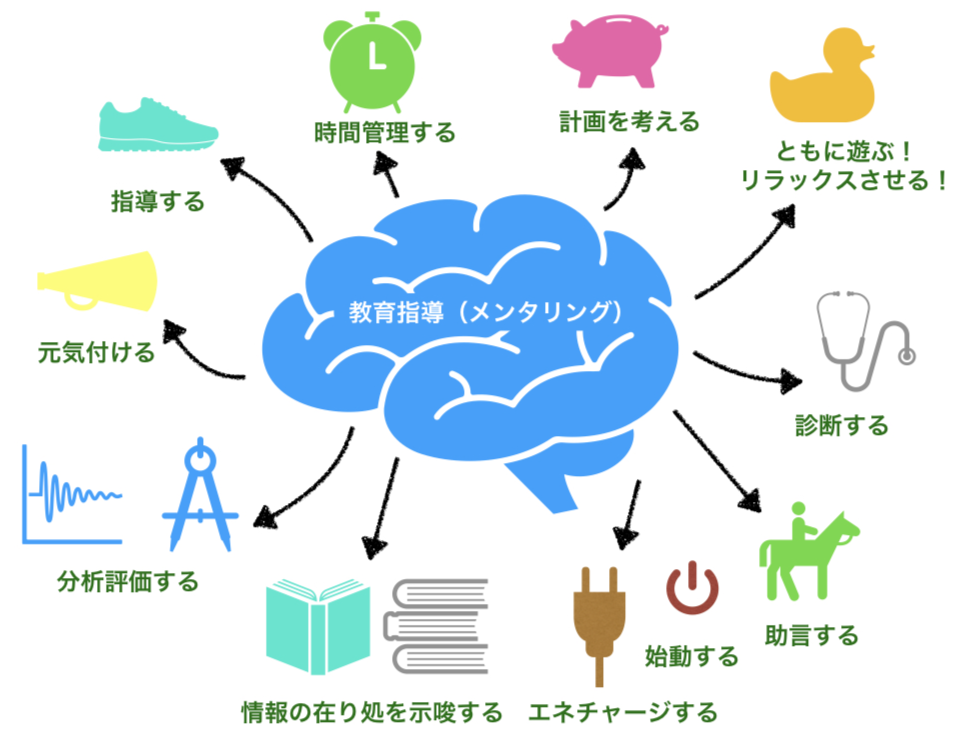
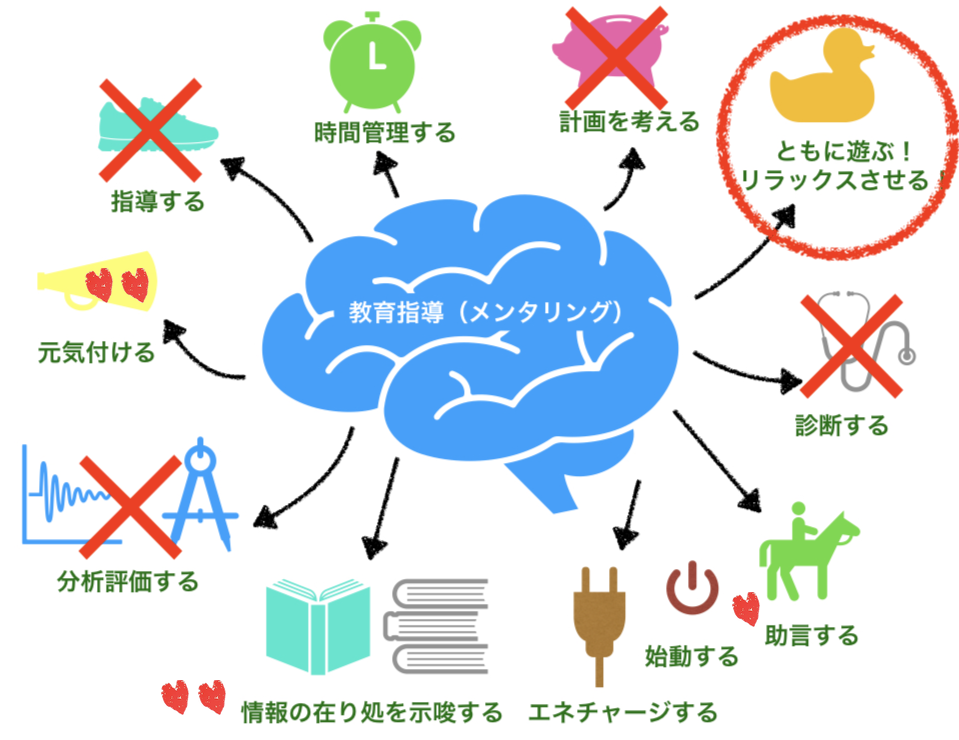
私が考える教育・指導(メンタリング)とは、(順不 同ですが)1)元気づける、2)指導する、3)時間管理する、4)計画を考える、5)ともに遊ぶ、6)診断する、7)助言する、8)始動する、9)エネ チャージする、10)情報の在り処を示唆する、そして、11)分析・評価するからなっています。
ゴロツキは英語でどう表現するのだろうか?
rogue, thug,がすぐに思いつくが、辞書にはほかにa hoodlum(無頼漢)、《米俗》 a hood; a
ruffian、〈ゆすり〉 a blackmailer、crook; Hood; sharper; punk;
racketeer、balla〈米俗〉
blackguard
brave〈古〉
bully〈古〉
canaille〈フランス語〉
cheap hoodlum
goon squad〈米俗〉(雇われて暴力を振るう)
gorilla〈俗〉
hardhead〈俗〉
Hessian
highbinder
hood〈米俗〉〔【語源】hoodlumの略〕
hoon〈豪俗〉
knave
lowlife〈話〉
miscreant
mug
picaro〈スペイン語〉
rogue
ruffian
scalawag
skelm〈南ア〉
a stand-over man〈豪俗〉(雇われた)
street tough
vagabond〈話〉など、さまざまな用語がある。みんな知っている言葉もあれば、初耳のものもあるだろう。どうしてゴロツキの用語はこんなに多様なの
だろうか?社会学者・文化人類学者からの僕の君たちへの質問だ!
03-002■ 遠隔教育(Distance education or distance learning, correspondence courses, online education)
遠隔教育の英語には、Distance education or distance learning, correspondence courses, online educationなどが含まれる。日本語でも遠隔教育は、オンライン教育や通信教育などが含まれるのと同じ事情である。「教師が生徒や学生と直接(物理 的に)対面して提供するのではなく、離れた場所から提供する教育」が遠隔教育の 意味である。「遠隔教育を行う理由は様々であり、たとえば学校へ通学が困難な場所で生活している生徒・学生に教育を届けるため、日中は仕事をしていて時間 に余裕が無く(物理的な)教室に通えない人に教育を提供するため、例えば COVID-19 感染症の爆発などで学校に生徒を集めることができないため(2020年当初の世界各国)等々、さまざまである。 感染爆発により学校閉鎖措置がとられても、その代わりに遠隔教育が行われれば、教育がまったく止まってしまうような事態を防ぎ、教育の提供を続けることが できる」ウィキペディア)
"Distance education or distance learning is the education of students who may not always be physically present at a school.[1][2] Traditionally, this usually involved correspondence courses wherein the student corresponded with the school via post. Today, it involves online education. A distance learning program can be completely distance learning, or a combination of distance learning and traditional classroom instruction (called hybrid[3] or blended).[4] Massive open online courses (MOOCs), offering large-scale interactive participation and open access through the World Wide Web or other network technologies, are recent educational modes in distance education.[1] A number of other terms (distributed learning, e-learning, m-learning, online learning, virtual classroom etc.) are used roughly synonymously with distance education."- Distance education.
03-003■ Universal Virtual Computer (UVC)
"UVC-based preservation is an archival strategy for handling the preservation of digital objects. It employs the use of a Universal Virtual Computer (UVC)—a virtual machine (VM) specifically designed for archival purposes, that allows both emulation and migration to a language-neutral format like XML.[1- Lorie R. A., 2002. A Methodology and System for Preserving Digital Data. Proceedings of the 2nd ACM/IEEE-CS joint conference on Digital libraries, Portland, Oregon, USA. 14–18 July 2002. New York, NY: Association of Computing Machinery. pp. 312-319 doi:10.1145/544220.544296]" - UVC-based preservation.
03-004■ ファクト・チェッキング(Fact-checking)
ファクト・チェッキング(Fact-checking)と は、ある事実について述べられた書類や報告の真実性や正確さを認定する(=決定する)ために事実に関する情報を検証することである。日本語では、ファクトチェックの ほかに、検証行為あるいは事実検証、事実確認といわれる。この行為は、事実として情報が公開される前(ante hoc)あるいは、公開された後(post hoc)の行われる。ファクトチェックは、情報公開された資料を、事後的に調べる第三者の検査機関がある一方で、資料を情報公開する機関そのものが発表の 前に、機関内あるいは、匿名性を保証された第三者機関が、おこなうことがある。
第三者がファクトチェックをおこなって、真実性が認 定されても、大きな影響を与えることは少ないが、真実性が疑われたり、一部に不確かな情報あると報告されると、それを受け入れていた社会にさまざまな裏目 の効果あるいは波及効果をもたらすことがある。それをバックファイアー効果(backfire effect)という。ウィペディア日本語には、2015年のインフルエン ザワクチンの効果検証で以下のような社会的影響力があったことを紹介している。
「2015年に米ダートマス大学のナイアン(英語
版)と英エクセター大学のライファーは、インフルエンザワクチンに関する誤解を否定する情報をアメリカ疾病予防管理センター (CDC)
がサイトに掲載した件について調査を行った。CDCの報道により、インフルエンザワクチンの接種によって逆にインフルエンザに罹患するという誤解や懸念が
大幅に低下した。しかし一方で、ワクチン接種の副作用に高い関心・懸念を抱く一部の層の間では、逆にインフルエンザワクチンの接種を控える傾向が強まった
[7]。このバックファイヤー効果はワクチン接種への懸念が元々低かった層の間では見られなかった[8]」出典)。
"Fact-checking
is the act of checking factual information in non-fictional text in
order to determine the veracity and correctness of the factual
statements in the text. This may be done either before (ante hoc) or
after (post hoc) the text has been published or otherwise
disseminated.[1] Fact-checking may be done privately, such as when a
magazine editor wants to verify the contents of a news article, either
before or after publication. This is called internal fact-checking.
Alternatively, the fact-checking analysis may be published, in which
case it is called external fact-checking.[2]/ Ante hoc fact-checking
(fact-checking before dissemination) aims to remove errors and allow
text to proceed to dissemination (or to rejection if it fails
confirmations or other criteria). Post hoc fact-checking is most often
followed by a written report of inaccuracies, sometimes with a visual
metric from the checking organization (e.g., Pinocchios from The
Washington Post Fact Checker, or TRUTH-O-METER ratings from
PolitiFact). Several organizations are devoted to post hoc
fact-checking, such as FactCheck.org and PolitiFact." - Fact-checking.
03-005■ 研究開発エコシステム(OU Research & Deveplopment Ecosystem, OU-R&D-E)→大阪大学エコシステム(OU Ecosystem)
大阪大学(OU)が2019年度より使い始めた独自 の用語。大阪大学の西尾章治郎総長によると、研究開発エコシステムは「卓抜した研究成果を社会実装し、その過程を通じて新たな課題を分析し、それをさらに 基礎研究に還元し、いっそう大きな革新的価値を生む好循環」と定義され、「OUビジョン2021」の中で示されている。→「新技術の課題、文理融合で研究 阪大が新組織設立」(2020/04/19、 日経)
なお、英訳の、OU Research & Deveplopment Ecosystem, OU-R&D-E、は池田光穂が勝手につけた英訳で正式なものではない。
ついでに、大阪大学は2020年9月の時点で、大阪 大学研究開発エコシステムは「研究開発」に偏りすぎ全体を包摂しにくいということで「大阪大学エコシステム(OU Ecosystem)」に改称する方針に変更された。
03-006■ ライフデザイン・イノベーション研究拠点(initiative for Life Design Innovation, iLDi)
ソサエティ5.0実現化研究拠点(正式には「大阪大学 Society 5.0 実現化研究拠点支援事業、ライフデザイン・イノベーション研究拠点」)であり、同ウェブサイトによると「情報科学技 術を基盤として事業や学内組織の垣根を超えて研究成果を統合し、社会実装に向けた取組を加速することにより、Society 5.0*の実現を目指す大学等の先端中核拠点の支援を目的とした事業」と説明されており。Society 5.0 とは「IoTビッグデータ、ロボット技術、人工知能等のイノベーションを産業や社会生活に活用し、人々が活力に満ちた質の高い生活を実感できる社会」と説 明している(「存在」しているかどうかの論証を拒絶するような説明であるので、それを「定義」とは言い難い)(メンバー一覧)。
同ウェブページでは、ライフデザイン・イノベーショ ン研究拠点では「人々の医療・健康情報である情報「パーソナル・ヘルス・レコード (Personal Health Records : PHR) 」に、日常生活、職場/学校での活動、食事、スポーツ活動など、日常生活の様々な活動データを加えたパーソナル・ライフ・レコード (Personal Life Records : PLR) を収集・活用」し、「そのために、PLR収集のためのプラットフォームを構築し、ブロックチェーンや匿名化の技術を用いて、個人データの適切なアクセス制 御や一元管理の方法を創出します。さらに、大学や関連病院に通院する患者の自宅を実証フィールドとしてデータ収集を行い、それらを用いてPLRの具体的な 有効性を10個のプロジェクトで実証してい」くと書かれている(ライフデザ イン・イノベーション研究拠点)。
その社会的アスペクトは、1)エデュテイメント、 2)ライフスタイル、3)ウェルネス、からなり、パーソナル・ヘルス・レコード (Personal Health Records : PHR)とパー ソナル・ライフ・レコード (Personal Life Records : PLR)を、ビッグデータで関連づける研究だという。
ライフデザイン・イノベーション研究拠点
03-007■ ヒューマンライブラリー(human library)
ウィキペディア日本語「ヒューマンライブラリー(human library)は、障がい者や社会的マイノリティを抱える人に対する偏見を減らし、相互理解を深めることを目的とした試み。「ヒューマンライブ ラリー」 は、『人を本に見立てて読者に貸し出す図書館』という意味で[1]、『読者(参加者)』と『本(障害者やマイノリティを持つ人)』とが一対一で対話をす る。「リビングライブラリー」とも呼ばれる。貸し出される本の例『トランスジェンダー(性同一性障害者を含む)、同性愛者等、セクシュアルマイノリティ、 薬物・アルコール・ギャンブル等、依存症からの回復者、 ホームレス、 難民、 アルビノ当事者、 高次脳機能障害者、ウイリアムズ症候群、 双極性障害、 脳性麻痺』がある。」ヒューマンライブラリー)- [1] 横田雅弘, 「ヒューマンライブラリーという図書館 ~新しい図書館のかたち~」『情報の科学と技術』 68巻 1号 2018年 p. 19-24, doi:10.18919/jkg.68.1_19, 情報科学技術協会
これまで、ヒューマンライブラリーを試みた組織や図 書館「駒澤大学、 獨協大学、 明治大学、 長崎外国語大学、 ヒューマンライブラリーNagasaki、 ブックオブ・りーふぐりーん、 山手オープンタウン、 リビングライブラリージャパン」ウィキペディア)による。
"The Human
Library
is an international organization and movement that first
started in Copenhagen, Denmark in 2000. It aims to address people's
prejudices by helping them to talk to those they would not normally
meet.[1][2][3] The organisation uses a library analogy of lending
people rather than books.[4][5] These people have "experienced
prejudice, social exclusion or stigma," and participants can ask them
questions so as to "learn about the other person and also challenge
their own prejudices."[6][7] The Human Library Organization is active
in over 80 countries,[8] in which there are a few permanent Human
Libraries but most happen as events.[9]_ [History]The organization
began in Copenhagen in 2000 when the first Human Library event was held
at Roskilde Festival.[9] The event was run by Ronni and Dany
Abergel,[9] Asma Mouna, Christoffer Erichsen, then working at the
Danish Youth NGO Stop Volden (which translates to Stop the Violence),
inspired by the American Stop the Violence Movement. The first event
ran four days with eight hours of conversations each day and more than
1000 people took part.
The next Human Library was hosted in Oslo, Norway by Ronni Abergel for
the Nordic Minister Councils youth assembly "Unge I Norden". The event
was prepared in partnership with Terese Mungai-Foyn and went on to
inspire the establishment of the Norwegian Human Library program in
2003.
The first permanent Human Library was established in Lismore, Australia
in 2006.[10] Till 2019, the project has grown to have partners in more
than 70 countries across the world.[11]" - The Human
Library.
くりこみ(normalization) とは「場の量子論(quantum field theory)で使われる、計算結果が無限大に発散してしまうのを防ぐ数学的な技法」ウィキ)のことである。
"Renormalization is a collection of techniques in quantum field theory, the statistical mechanics of fields, and the theory of self-similar geometric structures, that are used to treat infinities arising in calculated quantities by altering values of these quantities to compensate for effects of their self-interactions. But even if no infinities arose in loop diagrams in quantum field theory, it could be shown that it would be necessary to renormalize the mass and fields appearing in the original Lagrangian.[1]"- Renormalization.
ファインマンダイアグラム(Feynman diagram)朝永振一郎(Shin'ichirō Tomonaga, 1906-1979)
これだけでは、素人はなんのことかわかりにくいの で、より一般向けの解説を引用しよう。「くりこみ理論とは簡単にいうと無限大の量が出てきたら、それを有限な実験値で置き換えなさいということである」。 この理論の考案者である朝永振一郎(Shin'ichirō Tomonaga, 1906-1979)は「くりこみ理論というのは発散 を除く一つの便法で、 カンニングのようなもの」で「発散して値の定まらないと思える所へ実験値を代入しなさい」と表現した。しかし、追随者はより、この便法を洗練させていっ た。そのあと「くりこみ群の理論」ができあがり、「クオークの力学として量子色力学(QCD)」「相転移の理論」「多体量子論」という学問ができあがった という(出典「くりこ み理論からコンピューターへ」)。
私の感想:
「場の量子力学の術語で「くりこみ(理論)」というものがある。随分難しそうな話だが、この原語は Renormalization
である。平易な言葉で用語を作り出すと長期の学問史においてギャラリーや同盟者を作ることができることの反面教師になる好例ではないか?」
03-009■ 司法ミニマリズム(Judicial minimalism)
司法の「ミニマリストは、彼等が両極端な解釈と見な
すものの代わりとして、特定の事例に限定された最小限の憲法解釈を提供す
る。 またミニマリストは、安定した憲法が全員の利益になると信じており、判例や先
例拘束力の原則(stare decisis)を極めて重要視して
いる。 ミニマリストは、判例からの解離を最小限に
し、適用範囲を限定し、(保守派とは反対に)原意主義者や厳格解釈主
義者よりも、社会一般の方向性に基づいた解釈が、真の司法抑制を実現しつ
つ、(リベラル派の多くが求めるものより遥かに適応速度は遅いが)「生ける憲法」を
可能にすると主張する。 法廷におけるミニマリストは、憲法判断によって中絶の全面禁止や合法化を宣言したりするのではなく、ミニマリスト固有の優先順位に応じて、中絶などの判例に対する支持を、少しずつ強めたり弱めた
りする」司法ミニマリズム)
"Judicial
minimalism refers to a philosophy in United States constitutional
law which promotes itself as a
politically moderate viewpoint
such as that of retired Judge Sandra Day O'Connor. It is often compared
to other judicial philosophies such as judicial activism, judicial
originalism, and judicial textualism. Judicial
minimalism takes its approach from a limited method of decision-making
conceived by Edmund Burke." - Judicial
minimalism.
03-010■ リスク規制プログラム(Program on Risk Regulation)
Cass Sunsteinらがハーバード・ロースクールで行った教育プログラム:「リスク規制プログラム」は、21世紀の主要な危機に対し、法や政策がどのように対処するかを核とし、研究範 囲として予想されるのは、テロリズム、気候変動、職業安全性、伝染病、自然災害など の低頻度・大損害(LPHC)現象でであった。(→倫理的・法的・社会的連累= ELSI)
また、Cass Sunsteinは、「リスク規制に関する研究において、チムール・クランと共に、「利用可能性カスケード(Availability cascade)」の概念を考案したことで知られる。これは、あるアイデア に関する一般の議論が自己増殖して、個人がその重要性を過大評価することを指す」キャス・サンスティーン)である。
"An availability cascade is a self-reinforcing cycle that explains the development of certain kinds of collective beliefs. A novel idea or insight, usually one that seems to explain a complex process in a simple or straightforward manner, gains rapid currency in the popular discourse by its very simplicity and by its apparent insightfulness. Its rising popularity triggers a chain reaction within the social network: individuals adopt the new insight because other people within the network have adopted it, and on its face it seems plausible. The reason for this increased use and popularity of the new idea involves both the availability of the previously obscure term or idea, and the need of individuals using the term or idea to appear to be current with the stated beliefs and ideas of others, regardless of whether they in fact fully believe in the idea that they are expressing. Their need for social acceptance, and the apparent sophistication of the new insight, overwhelm their critical thinking."-availability cascade .
「利用可能性カスケード(Availability cascade)」は、まるで、リチャード・ファインマン先生がいう「カー ゴカルト・サイエンス」のように思える。
03-011■ 公共哲学(Public philosophy)
"Public
philosophy is a label used for at least two separate philosophical
projects. One project often called "public philosophy" is to address issues of public importance
through philosophy, especially in the areas of public policy, morality
and social issues.[citation
needed] In this conception, public philosophy is a matter of content,
not style.[citation needed] It must concern certain philosophical
issues, but may be undertaken in any venue.[citation
needed] The second project often called public philosophy is to engage in philosophy in public venues.
This view is exemplified by the Essays in Philosophy special issue on
public philosophy (Volume 15, issue 1, 2014), which defined public
philosophy as "doing philosophy with
general audiences in a non-academic setting".[1]
Public philosophy, in this conception, is a matter of style not
content. It must be undertaken in a public venue but might deal with
any philosophical issue." - Public
philosophy.
"Philosophers who hold the alternative view, that public philosophy is simply philosophy undertaken in public venues, are engaged in two projects. One of these is to educate the public and the other to engage with the public collaboratively to identify and address public problems. The second approach is often inspired by John Dewey's work on democracy and the need to reconstruct philosophy.[3] The two approaches are not exclusive. For instance, philosopher Michael J. Sandel describes public philosophy as having two aspects. The first is to "find in the political and legal controversies of our day an occasion for philosophy". The second is "to bring moral and political philosophy to bear on contemporary public discourse."[=Sandel, Michael J. (2005). Public Philosophy: Essays on Morality in Politics. Cambridge, Massachusetts: Harvard University Press.] James Tully says, "The role of a public philosophy is to address public affairs", but this "can be done in many different ways."[5] Tully's approach emphasizes practice through the contestable concepts of citizenship, civic freedom, and nonviolence.[6] Public philosophy, in some conceptions, is a matter of content rather than style. Public philosophy, in this sense, need not be undertaken in a public venue but must deal with a particular subset of philosophical problems."- Public philosophy.
03-012■ GPT-3(Generative Pre-trained Transformer 3)
My Wiki says, "Generative Pre-trained Transformer 3 (GPT-3) is an autoregressive language model that uses deep learning to produce human-like text. It is the third-generation language prediction model in the GPT-n series created by OpenAI, a for-profit San Francisco-based artificial intelligence research laboratory.[Shead, Sam (July 23, 2020). "Why everyone is talking about the A.I. text generator released by an Elon Musk-backed lab". CNBC. Retrieved July 31, 2020. Four preprints were released between May 28 and July 22, 2020.] GPT-3's full version has a capacity of 175 billion machine learning parameters. GPT-3, which was introduced in May 2020, and is in beta testing as of July 2020,[Bussler, Frederik (July 21, 2020). "Will GPT-3 Kill Coding?". Towards Data Science. Retrieved August 1, 2020.] is part of a trend in natural language processing (NLP) systems of pre-trained language representations.[Language Models are Few-Shot Learners] Prior to the release of GPT-3, the largest language model was Microsoft's Turing NLG, introduced in February 2020, with a capacity of 17 billion parameters or less than 10 percent compared to GPT-3. The quality of the text generated by GPT-3 is so high that it is difficult to distinguish from that written by a human, which has both benefits and risks.[Sagar, Ram (June 3, 2020). "OpenAI Releases GPT-3, The Largest Model So Far". Analytics India Magazine. Retrieved July 31, 2020.] Thirty-one OpenAI researchers and engineers presented the original May 28, 2020 paper introducing GPT-3. In their paper, they warned of GPT-3's potential dangers and called for research to mitigate risk.[1]:34 David Chalmers, an Australian philosopher, described GPT-3 as "one of the most interesting and important AI systems ever produced."[Chalmers, David (July 30, 2020). Weinberg, Justin (ed.). "GPT-3 and General Intelligence". Daily Nous. Philosophers On GPT-3 (updated with replies by GPT-3). Retrieved August 4, 2020.]" - GPT-3.
Shead, Sam (July 23, 2020). "Why everyone is talking about the A.I. text generator released by an Elon Musk-backed lab". CNBC. Retrieved July 31, 2020. Four preprints were released between May 28 and July 22, 2020.
GPT-3 and General Intelligence, by by David Chalmers
"GPT-3 contains no major new technology. It is basically a scaled up version of last year’s GPT-2, which was itself a scaled up version of other language models using deep learning. All are huge artificial neural networks trained on text to predict what the next word in a sequence is likely to be. GPT-3 is merely huger: 100 times larger (98 layers and 175 billion parameters) and trained on much more data (CommonCrawl, a database that contains much of the internet, along with a huge library of books and all of Wikipedia). Nevertheless, GPT-3 is instantly one of the most interesting and important AI systems ever produced. This is not just because of its impressive conversational and writing abilities. It was certainly disconcerting to have GPT-3 produce a plausible-looking interview with me. GPT-3 seems to be closer to passing the Turing test than any other system to date (although “closer” does not mean “close”). But this much is basically an ultra-polished extension of GPT-2, which was already producing impressive conversation, stories, and poetry. More remarkably, GPT-3 is showing hints of general intelligence. Previous AI systems have performed well in specialized domains such as game-playing, but cross-domain general intelligence has seemed far off. GPT-3 shows impressive abilities across many domains. It can learn to perform tasks on the fly from a few examples, when nothing was explicitly programmed in. It can play chess and Go, albeit not especially well. Significantly, it can write its own computer programs given a few informal instructions. It can even design machine learning models. Thankfully they are not as powerful as GPT-3 itself (the singularity is not here yet). When I was a graduate student in Douglas Hofstadter’s AI lab, we used letterstring analogy puzzles (if abc goes to abd, what does iijjkk go to?) as a testbed for intelligence. .....
Analogy as the Core of
Cognition, by Douglas
Hofstadter ,2009
My fellow student Melanie Mitchell devised a program, Copycat, that was quite good at solving these puzzles. Copycat took years to write. Now Mitchell has tested GPT-3 on the same puzzles, and has found that it does a reasonable job on them (e.g. giving the answer iijjll). It is not perfect by any means and not as good as Copycat, but its results are still remarkable in a program with no fine-tuning for this domain. What fascinates me about GPT-3 is that it suggests a potential mindless path to artificial general intelligence (or AGI). GPT-3’s training is mindless. It is just analyzing statistics of language. But to do this really well, some capacities of general intelligence are needed, and GPT-3 develops glimmers of them. It has many limitations and its work is full of glitches and mistakes. But the point is not so much GPT-3 but where it is going. Given the progress from GPT-2 to GPT-3, who knows what we can expect from GPT-4 and beyond? Given this peak of inflated expectations, we can expect a trough of disillusionment to follow. There are surely many principled limitations on what language models can do, for example involving perception and action. Still, it may be possible to couple these models to mechanisms that overcome those limitations. There is a clear path to explore where ten years ago, there was not. Human-level AGI is still probably decades away, but the timelines are shortening. GPT-3 raises many philosophical questions. Some are ethical. Should we develop and deploy GPT-3, given that it has many biases from its training, it may displace human workers, it can be used for deception, and it could lead to AGI? I’ll focus on some issues in the philosophy of mind. Is GPT-3 really intelligent, and in what sense? Is it conscious? Is it an agent? Does it understand? There is no easy answer to these questions, which require serious analysis of GPT-3 and serious analysis of what intelligence and the other notions amount to. On a first pass, I am most inclined to give a positive answer to the first. GPT-3’s capacities suggest at least a weak form of intelligence, at least if intelligence is measured by behavioral response. As for consciousness, I am open to the idea that a worm with 302 neurons is conscious, so I am open to the idea that GPT-3 with 175 billion parameters is conscious too. I would expect any consciousness to be far simpler than ours, but much depends on just what sort of processing is going on among those 175 billion parameters. GPT-3 does not look much like an agent. It does not seem to have goals or preferences beyond completing text, for example. It is more like a chameleon that can take the shape of many different agents. Or perhaps it is an engine that can be used under the hood to drive many agents. But it is then perhaps these systems that we should assess for agency, consciousness, and so on. The big question is understanding. Even if one is open to AI systems understanding in general, obstacles arise in GPT-3’s case. It does many things that would require understanding in humans, but it never really connects its words to perception and action. Can a disembodied purely verbal system truly be said to understand? Can it really understand happiness and anger just by making statistical connections? Or is it just making connections among symbols that it does not understand? I suspect GPT-3 and its successors will force us to fragment and re-engineer our concepts of understanding to answer these questions. The same goes for the other concepts at issue here. As AI advances, much will fragment by the end of the day. Both intellectually and practically, we need to handle it with care." - GPT-3 and General Intelligence, by by David Chalmers
++
03-013■ 反蔵書(anti-book-collection, counter-collection of books)
反蔵書とは、タレブ(=ナシーム・ニコラス・タレ ブ)『ブラックスワン(上)』(邦訳 、ダイアモンド社、2009年)の中に出てくる言葉である。具体的にはこういうことである。ウンベルト・エーコの蔵書癖は半端なものではなく、3万冊にお よぶ私設図書館の体(てい)をなすものだった。
いたづら者の知識人(= Umberto Eco, 1932-2016)は、その図書館を訪問する人間を 2つにわける。まずは(1)「ものすごい蔵書ですね。一体何冊読んだのですか?」と質問する人と、(2)蔵書は調査のために道具だと理解している人であ る。タレブによると情報論的価値(=経済学でいう稀少性という観点に相似して)から言って、読んだ本は読んでない本よりも価値は「下がる」はずだ。齢を重 ねると読んだ本も読んでいない本も増大するが、それはその人がものについて知り得た証でもある。だから、読んでいない本の蓄積は、いまだ自分の知識として 習得されていないものの蓄積である。その意味で読んでいない未読の蔵書は、反蔵書ということができるとタレブは言う。したがって、最初の質問すなわち「一 体何冊読んだのですか?」と聞く人は、読んだ本のリストが、エーコの頭の中に入っている情報だと「錯覚」する人のことである。ここでの錯認とはこういうこ とだ。自分が勉強していないことや、(読書という)経験を積んでいないリストを誇る「反履歴書」を売り込む人はいない。それはライバルにとって自分の ウィークポイントであるということを曝け出すことに繋がると「錯覚」をもっている。タレブは、読んだ本から得た情報をひけらかし書物を自尊心の増幅器につ かう者は尊敬に値しないと考えているようだ。自分の反蔵書——このレベルでは蔵書の中の未読の本というよりも自分が知らないこと「一般」という概念にまで 昇華されているが——が何であるかということを自覚する者が、真の学者、本物の中の本物学者——タレブは「反学者」という——なのではないかということ だ。
03-014■ エリアマネジメント(Managed area method, Area Management method)
エリアマネジメントというのは国土国交省とそのレン トシーカー関係者たちによる和製英語で、地域における環境と地域的価値(=具体的には地価)が向上ないしは安定成長するための、住民、事業主、地権者(= 地主)による主体的な関わり(=つまり公的な機関は施政の平等性のために当事者たちに責任をとらせる)活動や、政策誘導のこと。エリアマネジメントは和製 英語で、Managed area method や Area Management method という呼び方のほうが、理解してもらいやすい。 エリアマネジメントがなぜ政府が声高に主張する理由は、ポスト高度成長やバブル崩壊後の、住民の年齢構造の少子超高齢化、特定の利便性のある「セレブ地 域」への急速な富裕層の人口移動など、いびつな日本の社会の地域発展と維持の方向を定めるためである。ふつうの都市や農村は、一種のメタボリズムがあり、 また栄枯盛衰のサイクルがある。しかし、国土交通省は、都市や村落の開発に国税を投入し、そのことにつき納税者の厳しい目があるために、公平性を確保しな がらも、地域の「適正開発」を目指さざるをえない状況があるからである。
OBPにおけるヒアリングでも寝屋川が汚く、匂いが
するという市民の利用者の苦情が絶えない。これは出
典&リンク先の大阪府の40年近くにわたり「大幅に改善」してきたという行政の感覚とは、時間と地域、そして評価基準により「異なった観点」から
市民の利用者が見ているからに違いない。行政主導のエリアマネジメントが上手く機能していない好例である。
03-015■ アーリーアダプター(Early Adopters)
流行に敏感で、情報収集を自分でおこない、購入や導 入に決定権限のある人。ほかの消費層への影響力が大きく、オピニオンリーダーでもある。市場全体の13.5%のひとが含まれるという。コミュニケーション 学者・社会学 者、エベレット・M・ロジャース(Everett M. Rogers, 1931-2004)が1962年に"Diffusion of Innovations"で提唱したイノ ベーション普及に関する理論=イノベーター理論」によるものという(出典:https://www.jmrlsi.co.jp/knowledge/yougo/my02/my0219.html)
英語のウィキペディアにも、日本語の解説にはない、
コストのことも書いてあるので、引用してみよう:"In exchange for being an early adopter,
and thus being exposed to the problems, risks, and annoyances common to
early-stage product testing and deployment, the lighthouse customer is
sometimes given especially attentive vendor assistance and support,
even to the point of having personnel at the customer's work site to
assist with implementation. The customer is sometimes given
preferential pricing, terms, and conditions, although new technology is
often very expensive, so the early adopter still often pays quite a
lot"- early
adopter.
03-016■ サブスク、サブスクリプション(Subscription business model)
サブスクとは、サブスクリプション (Subscription)=つまり定期購読の意味で、定額料金を支払うことで、一定の期間、サービスを受けられることを保証されるビジネス、つまり正 式には、サブスクリプション・ビジネス・モデル(Subscription business model)のことをさ す。アマゾンのブライムにおける送料無料対象商品があるとか、ネットフリックス(Netflix)のように、さまざまグレードの 定期購読することで、動画や映画が見放題 になるサービスが、その典型例。
英語での説明(表現法)を学ぶために、次のウィキペ ディアの表現も参照にしてみよう:"The subscription business model is a business model in which a customer must pay a recurring price at regular intervals for access to a product. The model was pioneered by publishers of books and periodicals in the 17th century, and is now used by many businesses and websites" -subscription business model.
03-017■ 実用最小限の製品(Minimum Viable Product, MVP)
実用最小限の製品(Minimum Viable Product, MVP)とは「顧客を過不足なく満足させ、製品開発に役立つ有効なフィードバックや実証を得られる機能を備えた パイロット製品を指す。この用語は、2001年にフランク・ロビンソンによって考案・定義され、その後スティーブ・ブランク(Steve Blank, 1953- )とエリック・リース(Eric Ries, 1978- )によって広められた。また、事前に市場分析を実施することもMVPの範疇に含まれる場合がある」
内容のMVP(最終的プロダクトの必要かつ最小限の
スペックをもつ製品やモデル)と形式のMVP(仮想的なモデル)がある。
Eric Ries 『スタートアップ・ウェイ
: 予測不可能な世界で成長し続けるマネジメント』井口耕二訳、 日経BPマーケティング、2018年
内臓理論(Visceral Theory)とは、これまでのデカルト的二元論では、心身の心=精神(mind)の身体に対する優越性に疑問を付し、身体の経験である、皮膚感覚や内臓 感覚から生まれる思惟に価値をシフトしてみるというポストモダン状況における対抗思想の一つである。内臓の理論の典型例は、具体化論=エンボディメントな どがその実例で、感覚経験や直感を、どのように経験として組織するか、あるいは言語化して、心=精神(mind)から生み出される言語や思念と対抗するの かということに議論の焦点がおかれる。その意味で、内臓理論は、デカルト的二元論の枠組みから、その枠組みを問い直し、また、そこから内破する思考法であ ると言える。リンク先に、社会研究のためのブルックリン研究大学院(Brooklyn Instittute for Social Research)の授業コースを紹介しておく。
Visceral
Theory: Affect and Embodiment, by Instructor: Abby Kluchin, June 05
— July 17, 2013
03-019■ チューリング・テスト(Turing test)
ウィキペディアはいう「チューリングテスト(Turing test)は、アラン・ チューリングが提案した、ある機械が「人間的」かどうかを判定するためのテストである。これが「知的であるかかどうか」とか「人工知能であるかどうか」と かのテストであるかどうかは、「知的」あるいは「(人工)知能」の定義、あるいは、人間が知的であるか、人間の能力は知能であるか、といった定義に依存す る。 アラン・チューリングが1950年に"Computing Machinery and Intelligence"の中で書いたもので、以下のように行われる。人間の判定者が、一人の(別の)人間と一機の機械に対して通常の言語での会話を行 う。このとき人間も機械も人間らしく見えるように対応するのである。これらの参加者はそれぞれ隔離されている。判定者は、機械の言葉を音声に変換する能力 に左右されることなく、その知性を判定するために、会話はたとえばキーボードとディスプレイのみといった、文字のみでの交信に制限しておく[注釈 1]。判定者が、機械と人間との確実な区別ができなかった場合、この機械はテストに合格したことになる。 このテストについては、もっともだと納得する人もいれば、そうでない人もいた。後に実際に人間と「会話」するコンピュータ・プログラムが現れた後における 知見としては、「ELIZA効果」などのように、先入観や情況などによって単純な(「機械的」な)反応をするだけのものにも人間はだまされてしまう場合が あるということがわかり、それは結果的にはこのテストの発想への反例と考えられることがある。サールは、そのような一見人工知能のように見えるものを"弱 いAI"とした。他にもサールは「中国語の部屋」という、表面的にはこのテストと同であるにもかかわらず、その示す所に納得できないだろうようなアレンジ を提示している。 2014年6月7日、ロンドンのテストに「13歳の少年」の設定で参加したロシアのチャットボットであるユージーン・グーツマン(Eugene Goostman)が、30%以上の確率で審査員らに人間と間違われて史上初めての「合格者」となった」以上、ウィキペディア.
"The Turing test, originally called the imitation game by Alan Turing in 1950,[2] is a test of a machine's ability to exhibit intelligent behaviour equivalent to, or indistinguishable from, that of a human. Turing proposed that a human evaluator would judge natural language conversations between a human and a machine designed to generate human-like responses. The evaluator would be aware that one of the two partners in conversation is a machine, and all participants would be separated from one another. The conversation would be limited to a text-only channel such as a computer keyboard and screen so the result would not depend on the machine's ability to render words as speech.[3] If the evaluator cannot reliably tell the machine from the human, the machine is said to have passed the test. The test results do not depend on the machine's ability to give correct answers to questions, only how closely its answers resemble those a human would give. The test was introduced by Turing in his 1950 paper "Computing Machinery and Intelligence" while working at the University of Manchester.[4] It opens with the words: "I propose to consider the question, 'Can machines think?'" Because "thinking" is difficult to define, Turing chooses to "replace the question by another, which is closely related to it and is expressed in relatively unambiguous words."[5] Turing describes the new form of the problem in terms of a three-person game called the "imitation game", in which an interrogator asks questions of a man and a woman in another room in order to determine the correct sex of the two players. Turing's new question is: "Are there imaginable digital computers which would do well in the imitation game?"[2] This question, Turing believed, is one that can actually be answered. In the remainder of the paper, he argued against all the major objections to the proposition that "machines can think".[6] Since Turing first introduced his test, it has proven to be both highly influential and widely criticised, and it has become an important concept in the philosophy of artificial intelligence.[7][8][9]. Some of these criticisms, such as John Searle's Chinese room, are themselves controversial."
[2] (Turing 1950, p.
442) Turing does not call his idea "Turing test", but rather the
"imitation game"; however, later literature has reserved the term
"imitation game" to describe a particular version of the test. See
#Versions of the Turing test, below. Turing gives a more precise
version of the question later in the paper: "[T]hese questions [are]
equivalent to this, 'Let us fix our attention on one particular digital
computer C. Is it true that by modifying this computer to have an
adequate storage, suitably increasing its speed of action, and
providing it with an appropriate programme, C can be made to play
satisfactorily the part of A in the imitation game, the part of B being
taken by a man?'" (Turing 1950, p. 442)- Turing, Alan (October 1950),
"Computing Machinery and Intelligence", Mind, LIX (236): 433–460,
doi:10.1093/mind/LIX.236.433

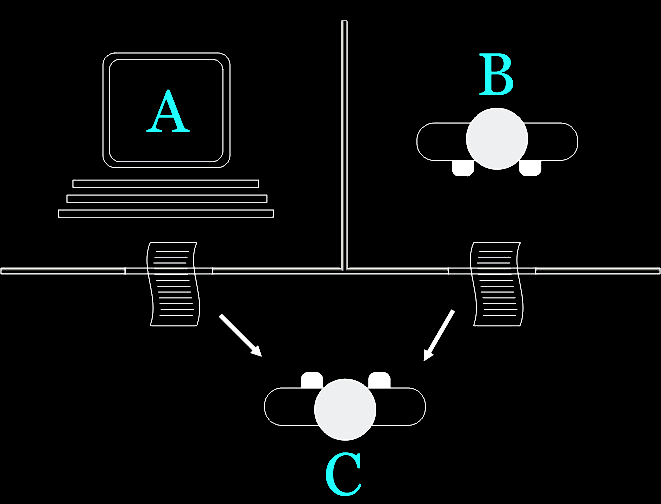
03-020■ 実践理性(praktische Vernunft, practical reason)
実践理性とは、カント(哲学)による概念であり「自 律性をもち、経験的動機に依存せず、先天的な道徳法則によって意志を規定する理性」goo 辞書)のことをいう。
"Practical reason is the general human capacity for resolving, through reflection, the question of what one is to do. Deliberation of this kind is practical in at least two senses. First, it is practical in its subject matter, insofar as it is concerned with action. But it is also practical in its consequences or its issue, insofar as reflection about action itself directly moves people to act. Our capacity for deliberative self-determination raises two sets of philosophical problems. First, there are questions about how deliberation can succeed in being practical in its issue. " - Practical Reason, by Stanford Encyclopedia of Philosophy
03-021■ 均衡理論(equilibrium theory)
経済諸量がバランスを保って変動への傾向をみせなく なる状態を均衡というが、それが成立する条件を証明、分析する理論を均衡理論(equilibrium theory)という。スーパーニッポニカの「一杉哲也」 説明による学説のは以下のとおり「(レオン・)ワルラス以後、J・A・シュンペーターは景気変動を一般均衡理論的に説明し、J・R・ヒックスは将来の予想 を体系に加え、O・R・ランゲ、D・パティンキンはさらに一般化を行った。またW・レオンチェフは相互依存関係を産業連関表という形でとらえ直した。最近 では、ケインズ経済学などマクロ体系を均衡理論的に解釈しなおす研究が盛んである。/均衡理論は、経済学の理論に次のような影響を与えた。第一は論理的整 合性の徹底である。二つの変数を解くには、二つの方程式をもってしなければならない。第二は決定の論理である。ある価格がその値に決まるのは、右下がりの 需要曲線と右上がりの供給曲線があって、それが交差するところにその値があるからである。第三は相互依存関係の認識である。すなわち、ある価格の変化は、 その財の需給を変化させるだけでなく、代替、補完その他の諸関係を通じて、他の経済諸量に波及してゆく。均衡理論はこのように大きな影響を及ぼしたが、反 面、この理論は現実分析を忘れ、理論のための理論に走りやすい危険をもっている」
「これに対して、不均衡分析の考え方は、実際の取引
はかならずしも均衡価格においてのみなされるのではなく、不均衡状態においても現実の取引はなされる、という認識から出発する。……価格P0のもとでは、
企業はQ1だけ生産したいと計画するが、需要の制約のためにその計画は実現されない。実現するのは計画量Q1のうちQ0だけである。したがって、当初Q1
を生産するために予定していた労働者全員を雇用することはしない。実現した生産量Q0に必要な労働者を雇うように当初の雇用計画を縮小する方向に改訂す
る。生産物市場に不均衡が存在するために、労働雇用計画をもう一度やり直すという意味で、企業は二度雇用計画をしている。このような意思決定プロセスを再
決定仮説(二重決定仮説)dual decision
hypothesisとよび、R・W・クラウアーによって提唱された。生産物市場の不均衡を考慮に入れて再決定された労働需要を有効労働需要という。/不
均衡分析は、価格は市場を清算するよう伸縮的に変化するのではなく、固定的性格をもつという立場をとる。価格の固定性を正当化する理論的な基礎づけが、不
均衡分析においては必要とされる」内島敏之)
尊厳(Dignity)とは、自分自身を価値づけか つ自分自身を敬し、かつ自分自身が倫理的に扱われるように求める個人の権利である。そのため、日本語では「個人の尊厳」と翻訳されることがある。
"Dignity
is the right of a person to be valued and respected for their own sake,
and to be treated ethically. It is of significance in morality, ethics,
law and politics as an extension of the Enlightenment-era concepts of
inherent, inalienable rights. The term may also be used to describe
personal conduct, as in "behaving with dignity"." - Dignity.
03-023■ デジタル・ネイティブ(Digital native)
日本語ウィキペディアは議論の余地があるという留保 をつけて次のように定義する→「デジタルネイティブ(世 代) (digital native) とは、学生時代からインターネットやパソコンのある生活環境の中で育ってきた世代であり、日本では1980年前後生まれ以降が該当するとされ、後述のとお り1970年代後半生まれを黎明として3区分に分類される。2001年に提唱され、2010年代に入ってからバズワード化した」。語の来歴は「Marc Prenskyが2001年に出版された著書"Digital Natives, Digital Immigrants"内で定義した呼称であり、生まれながらにITに親しんでいる世代をデジタルネイティブ (Digital Natives) 、IT普及以前に生まれてITを身につけようとしている世代をデジタルイミグラント (Digital Immigrants) と」区別して呼ぶ。
この日本語の解説は英語からの移植であることは次の 文章でも明確だ:"The term digital native describes a person who has grown up in the information age, (rather than having acquired familiarity with digital systems as an adult, as a digital immigrant). Digital natives was meant to describe young people born in close contact with computers and the internet through mobile phones, tablets, and video games consoles.[1: Prensky, Marc (September 2001). "Digital Natives, Digital Immigrants Part 1". On the Horizon. 9 (5): 1–6.] The formula was used to distinguish them from “digital immigrants,” that is from people who were born before the advent of the internet and came of age in a world dominated by print and television.[2] Both terms were used as early as 1996 as part of the Declaration of the Independence of Cyberspace.[3] They are often used to describe the digital gap in terms of the ability of technological use among people born from 1980 onward and those born before.[4]"- https://en.wikipedia.org/wiki/Digital_native
マーク・プレンスキーのこの「民族」と「移民」の比 喩はそれほど頭の賢いものとは言えない。なぜなら、私たちはデジタル・イミグラントの世代に相当するが、現在のデジタル利用環境状況は、私たちの先達から デジタルネイティブにいたる技術者と製作者とユーザーの相互作用による帝国世界の構築であり、別に私たちは周辺地域から帝国に移民してきたわけでない。も ちろん、帝国作りには協力はしてきたが、それは働き蟻のような貢献で、だれが女王であり、だれが兵隊蟻であると類比させることも、できないことはないが奇 矯ではある。
John Perry Barlow, "A Declaration of the
Independence of Cyberspace,"
1996.; "Governments of the Industrial World, you weary giants of flesh
and steel, I come from Cyberspace, the new home of Mind. On behalf of
the future, I ask you of the past to leave us alone. You are not
welcome among us. You have no sovereignty where we gather."
03-024■ Nineteen Eighty-Four: A Novel(1984)
"Nineteen Eighty-Four: A Novel, often published as 1984, is a dystopian social science fiction novel by English novelist George Orwell. It was published on 8 June 1949 by Secker & Warburg as Orwell's ninth and final book completed in his lifetime. Thematically, Nineteen Eighty-Four centres on the consequences of totalitarianism, mass surveillance, and repressive regimentation of persons and behaviours within society.[2][3] Orwell, himself a democratic socialist, modelled the authoritarian government in the novel after Stalinist Russia.[2][3][4] More broadly, the novel examines the role of truth and facts within politics and the ways in which they are manipulated.The story takes place in an imagined future, the year 1984, when much of the world has fallen victim to perpetual war, omnipresent government surveillance, historical negationism, and propaganda. Great Britain, known as Airstrip One, has become a province of a totalitarian superstate named Oceania that is ruled by the Party who employ the Thought Police to persecute individuality and independent thinking.[5] Big Brother, the leader of the Party, enjoys an intense cult of personality despite the fact that he may not even exist. The protagonist, Winston Smith, is a diligent and skillful rank-and-file worker and Outer Party member who secretly hates the Party and dreams of rebellion. He enters into a forbidden relationship with a colleague, Julia, and starts to remember what life was like before the Party came to power."- Nineteen Eighty-Four: A Novel.
「1950年代に発生した核戦争(→「ターミネイ ターの時間構造」)を経て、1984年現在、世界はオセアニア、ユーラシア、イースタシアの3つの超大国によって分割統治されている。さらに、間にある紛 争地域をめぐって絶えず戦争が繰り返されている。作品の舞台となるオセアニアでは、思想・言語・結婚などあらゆる市民生活に統制が加えられ、物資は欠乏 し、市民は常に「テレスクリーン」と呼ばれる双方向テレビジョン、さ らには町なかに仕掛けられたマイクによって屋内・屋外を問わず、ほぼすべての行動が当局によって監視されている。 オセアニアの構成地域の一つ「エアストリップ・ワン(旧英国)」の最 大都市ロンドンに住む主人公ウィンストン・スミスは、真理省の下級役 人として日々歴史記録の改竄作業を 行っていた。物心ついたころに見た旧体制やオセアニア成立当時の記憶は、記録が絶えず改竄されるため、存在したかどうかすら定かではない。ウィンストン は、古道具屋で買ったノートに自分の考えを書いて整理するという、禁止された行為に手を染める。ある日の仕事中、抹殺されたはずの3人の人物が載った過去 の新聞記事を偶然に見つけたことで、体制への疑いは確信へと変わる。「憎悪週間」 の時間に遭遇した同僚の若い女性、ジューリアから手紙による告白を受け、出会いを重ねて愛し合うようになる。また、古い物の残るチャリントンという老人の 店(ノートを買った古道具屋)を見つけ、隠れ家としてジューリアと共に過ごした。さらに、ウィンストンが話をしたがっていた党内局の高級官僚の1人、オブ ライエンと出会い、現体制に疑問を持っていることを告白した。エマニュエル・ゴールドスタインが書いたとされる禁書をオブライエンより渡されて読み、体制の裏側を知るようになる。 ところが、こうした行為が思わぬ人物の密告から明るみに出て、ジュー リアと一緒にウィンストンは思想警察に捕らえられ、愛情省で尋問と拷問を受けることになる。最終的に彼は、「愛情省」の101号室 で自分の信念を徹底的に打ち砕かれ、党の思想を受け入れ、処刑(銃殺)される日を想いながら“心から”党を愛すようになるのであった。」1984年 (小説).
【日本語訳】ジョージ・オー
ウェル 著一九八四年(Nineteen Eighty-Four)H.Tsubota 訳
「パーセプトロン(Perceptron)は、人工 ニューラルネットワーク(Artificial neural network)のひとつ。フランク・ローゼンブラット(Frank Rosenblatt, 1928-1971)が1957年に考案し、1958年に発表。そのモデルは同じく1958年に発表されたロジス ティック回帰(Logistic regression)と等価といわれる」。さて、「ニューラルネットワーク(neural network)は、ニューロンの構造的配置に類比的に構築されるネットワークであり、ウォーレン・マカロック(Warren Sturgis McCulloch, 1898-1969)とウォルター・ピッツ(Walter Harry Pitts, Jr. 1923-1969)の形式ニューロン(formal neuron)がそのモデルになっている」。
"In machine learning,
the perceptron is an algorithm for supervised learning of
binary classifiers.
A binary classifier is a function which can decide whether or not an
input, represented by a vector of numbers, belongs to some specific
class.[1]
It is a type of linear classifier, i.e. a classification algorithm that
makes its predictions based on a linear predictor function combining a
set of weights with the feature vector."
パーセプトロンは「視覚と脳の機能をモデル化したものであり、パターン認識を行う。ただし学習につ いては自明ではなく、特に多層パーセプトロン(Multilayer perceptron, MLP)の機械学習に関する歴史は、それがパーセプトロンの歴史だと言っても過言ではない。1960年代に爆発的なニューラルネットブームを巻き起こした が、60年代末のマービン・ミンスキー(Marvin Minsky, 1927-2016)らによる、単層パーセプトロンは線形分離可能なものしか学習できないという指摘は、多層パーセプトロンの学習が当時まだよくわからな かったことから、一時研究が停滞した。
※単純パーセプトロン「入力層と出 力層のみの2層からなる、単純パーセプトロン (Simple perceptron) は線形分離可能な問題を有限回の反復で解くことができる[5]一方で、線形非分離な問題を解けないことがマービン・ミンスキーとシーモア・パパートによっ て指摘された」
※多層パーセプトロン「多層にすれ
ば線型分離不可能な問題が解けることはマカロックとピッツの頃から解っていたわけだが、機械学習が問題であった。バックプロパゲーションは多層パーセプト
ロンの学習への道を開いた。ディープラーニングは、より層を増やした場合の学習を実用化しブームとな」る
影響を受けた変種といえるニューラルネットワークも 多数提案されている。パーセプトロン自体はその後、ボルツマンマシン(Boltzmann machine)や、多層パーセプトロンの機械学習をある程度実用化したバックプロパゲーション(Backpropagation) などによって1980年代に再興隆した後、1990年代にはまた停滞した。21世紀に入った後の研究の進展などにより、より層を増やしたパーセプトロンで の機械学習を指すいわゆる「ディープラーニング(Deep learning)」の 実用化と、それによる画像認識などの成果」があがっている。
"Deep learning
(also known as deep structured learning) is part of a broader family of
machine learning methods based on artificial neural networks with
representation learning. Learning can be supervised, semi-supervised or
unsupervised."
03-026■ イーポートフォリオ、e-ポート フォリオ(e-portfolio, electric portfolio)
イーポートフォリオ、e-ポートフォリオ、あるい は、エレクトリック・ポートフォリオとは、ウェブ上につくられたユーザー自身の個人の達成(業績)に関する電子証明のコレクション。電子証明あるいは電子 証拠(electronic evidence)とは、テキスト、電子ファイル、イメージ、マルチメディア、ブログ紹介、ハイパーリンク集などである。e- ポートフォリオは、個人の履歴書のようなもので、その人を評価したい人間、組織、コミュニティなどが、ウェブ上の客観的な資料をもってその人の業績やパ フォーマンス能力を評価するためにある。資料へのアクセス方法や、管理など、プライバシーならびにセキュリティなどで、必要な人がアクセスでき、本人以外 が加筆(あるいは改ざん)できないようにするためのセキュリティ情報の措置が必要になる。
"An electronic portfolio
(also known as a digital portfolio, online portfolio, e-portfolio,
e-folio, or eFolio)[1] is a collection of electronic evidence assembled
and managed by a user, usually on the Web. Such electronic evidence may
include input text, electronic files, images, multimedia, blog entries,
and hyperlinks. E-portfolios are both demonstrations of the user's
abilities and platforms for self-expression. If they are online, users
can maintain them dynamically over time.
One can regard an e-portfolio as a type of learning record that
provides actual evidence of achievement. Learning records are closely
related to the learning plan, an emerging tool which individuals,
teams, communities of interest, and organizations use to manage
learning.[citation needed] To the extent that a personal learning
environment captures and displays a learning record, it may also
operate as an electronic portfolio.
E-portfolios, like traditional portfolios, can facilitate students'
reflection on their own learning, leading to more awareness of learning
strategies and needs.[2] Comparative research by M. van Wesel and A.
Prop between paper-based portfolios and electronic portfolios in the
same setting tentatively suggests that use of an electronic portfolio
may lead to better learning outcomes.[3]" - Electronic portfolio.
03-027■ 収穫逓増(Increasing returns)
収穫逓増(Increasing returns)とは「固定および可変の入力(例えば工場規模と労働者数)のある生産システムで、製品をより多く生産するのにかかるコストは減少していく。収穫逓増(Increasing returns)は経済的概念だが、収穫逓増の原理(=法則「収穫逓増の法則」)はテクノロジー」のイノベーションにも当然反映する。「映画やソフトウェア、ソーシャルゲームのように開発費、設備費のような固定費が一定でユーザー数が増えても運営にかかる人件費などの費用が増大しないことにより、生産性が向上する」。それにより、利益率が向上するが「売り上げが増えても雇用の創出には貢献しないので実体経済に与える消費の拡大には結び」つくこともあれば、つかないこともある。これの反対用語が「収穫逓減(diminishing returns)」である。
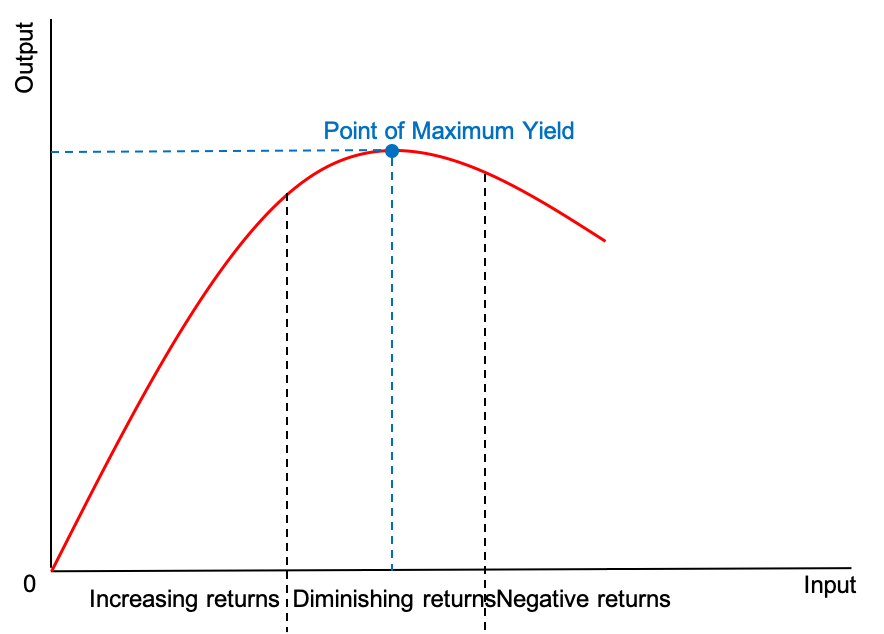
The areas of increasing, diminishing and negative returns are identified at points along the curve. There is also a point of maximum yield which is the point on the curve where producing another unit of output becomes inefficient and unproductive.
Increasing Returns and the New World of Business, by W. Brian Arthur, in "the Magazine (July–August 1996)"
03-028■ 収穫逓減(diminishing returns)
「収穫逓減(diminishing returns)」とは、「固定および可変の入力(例えば工場規模と労働者数)のある生産システムで、可変入力がある点を過ぎると、入力の増加が出力の増加に結びつかなくなっていく」ことをいう。収 穫逓減(diminishing returns)の例としてよくあげられるのは農業である「農業の生産量を増大させるには、農民は痩せた土地を耕作して耕作面積を広げるか、既存の土地で より集中的な生産手法を適用する必要がある。どちらにしても、農業生産量を増大させるのにかかるコストは増大していき……農業生産量の増大が人口増大に追 いつかなくなる」からである。収穫逓減の反対語は「収穫逓増(Increasing returns)」である。
"The law of diminishing returns (also known as the law of diminishing marginal productivity) states that in productive processes, increasing a factor of production by one unit, while holding all others production factors constant, will at some point return a lower unit of output per incremental unit of input.The law of diminishing returns does not cause a decrease in overall production capabilities, rather it defines a point on a production curve whereby producing an additional unit of output will result in a loss and is known as negative returns. Under diminishing returns, output remains positive however productivity and efficiency decrease."- diminishing returns.

Diminishing Returns
Graph The graph highlights the concept of diminishing returns by
plotting the curve of output against input. The areas of increasing,
diminishing and negative returns are identified at points along the
curve. There is also a point of maximum yield which is the point on the
curve where producing another unit of output becomes inefficient and
unproductive.
03-029■ フィルターバブル(filter bubble)
「フィルターバブル (filter bubble) とは、「インターネットの検索サイトが提供するアルゴリズムが、各ユーザーが見たくないような情報を遮断する機能」(フィルター)のせいで、まるで「泡」 (バブル)の中に包まれたように、自分が見たい情報しか見えなくなること。」イーライ・パリサー(Eli Pariser, 1980- )の用語。「この語はインターネット活動家であるイーライ・パリサーが2011年に出版した同名の題の著書『The Filter Bubble』(邦訳は『フィルターバブル』のタイトルで2016年)の中で作った。この本によると、ユーザーは次第に自分の考えと対立する観点の情報に 触れることができなくなり、自分自身の情報皮膜の中で知的孤立に陥るという。パリサーによると、フィルターバブルの効果は、人間どうしの対話に対してネガ ティブな影響がある可能性があるというが、影響はほとんどない、あるいは解消可能であるとする主張もある。「エコー・チェンバー」(自分で発した音が、あ らゆる方向から反射して自分の方に返ってくる、音響の実験室。日本語で言うと「残響室」)にいるかのように、あらゆる方向から自分と同じ意見が返ってくる ような閉じた空間にいた結果、様々な人の意見を聞いて様々な考え方を知ることが出来るのではなく、単に自分の意見が増幅・強化されるだけとなる「エコー チェンバー現象」などとも関係が深い用語である」フィルターバブル)
"A filter bubble
is a term coined by the Internet activist Eli Pariser to refer to a
state of intellectual isolation[1] that can result from personalized
searches when a website algorithm selectively guesses what information
a user would like to see based on information about the user, such as
location, past click-behavior and search history.[2][3][4] As a result,
users become separated from information that disagrees with their
viewpoints, effectively isolating them in their own cultural or
ideological bubbles.[5] "- filter bubble.
03-030■ PoC, 概念実証(Proof of Concept)
現在考案中の計画が、本当に実現可能かどうかを、効 果や技術論的な観点から検証することをさします。これは、実証することではなく、むしろ、確度の高さを保証する思考実験でもある。「新たな概念やアイデア の実現可能性を示すために、簡単かつ不完全な実現化(または概要)を行うこと、あるいは原理のデモンストレーションによって、ある概念や理論の実用化が可 能であることを示すこと」概念実証)
"Proof of concept
(PoC), also known as proof of principle, is a realization of a certain
method or idea in order to demonstrate its feasibility,or a
demonstration in principle with the aim of verifying that some concept
or theory has practical potential. A proof of concept is usually small
and may or may not be complete. These collaborative trails aims to test
feasibility of business concepts and proposals to solve business
problems and accelerate business innovation goals. [source]" - Proof of concept (PoC).
ハンガリー出身の米国のカタリン・カリコが2005年にペンシルヴァニア大学のドリュー・ワイスマン教授共同で論文を発表した。カタリン・カリコはその後、ドイツのビオンテックに移籍した。mRNA とは、メッセンジャーRNAと言って体内でDNAを合成する際に、最初のDNAの鋳型から映される転写用の鋳型である。mRNAは、体内に入れると分解さ れるか炎症反応を引き起こしてしまう。カリコらは、RNAのウリジン (Uridine) ——ピリミジンヌクレオシドの1つでウラシルがリボース環にβ-N1-グリコシド結合で接続した構造をもつ物質——を、その異性体であるシュードウリジン に置き換えることで炎症を抑えることを発見した。コロナmRNAワクチンとは、コロナウイルス(SARS-CoV-2)の外皮にあるトゲトゲ(スパイク) を作り出す遺伝情報のみを生み出すmRNAを保護用の脂質膜に閉じ込め注射する。この膜は細胞膜との親和性があるために、体内で細胞と融合し、細胞内に mRNAが入る。細胞内のリボソームのなかでその遺伝情報を読み、スパイクタンパク質だけを生み出す。細胞は融解し、mRNAもまた分解されるがスパイク タンパク質は血中に放出される。これに体の免疫細胞は反応してスパイクタンパク質を異物として排除する免疫細胞(抗体)をつくりだす。この免疫細胞は、今 後の感染に備えてその情報を細胞のなかに「記憶」し、サイド、同様のスパイクタンパク質が体のなかに入ったときに増殖して、コロナウイルスの感染を防ぐこ とができる。
B to B は、ビジネス・トゥー・ビジネスの略号で、会社と会社の間の取引によるもの。business-to-business、B2B、BtoBとも書く。B to C ビジネス・トゥー・カスタマーの略で、直接消費者と企業が結びつくケースである。企業対消費者間取引(business-to-consumer, B2C, BtoC)とも表現する。企業対政府間取引(business-to-government, B2G, BtoG)などもある。
「B2B取引の規模は、B2C取引のそれよりも遥か
に大きい。この主たる理由は、典型的なサプライチェーンの中で、部品材料や原材料を扱うB2B取引が多数存在するが、一方、B2C取引はたった一つしかな
い、つまり、最終製品を最終消費者に販売するだけだからである。例えば、自動車メーカーは自動車の製造のため、タイヤ、前面ガラスの原材料となるガラス、
ゴムホースをそれぞれの製造業者から購入するなど、複数回のB2B取引を行う。最終取引、すなわち完成した車を消費者に売るというのは、一回切りのB2C
取引である」企業間取引 Business-to-business)
■——現在建築中01——■
■■——現在建築中02——■
■■■——現在建築中03——■
リンク
文献
その他の情報

